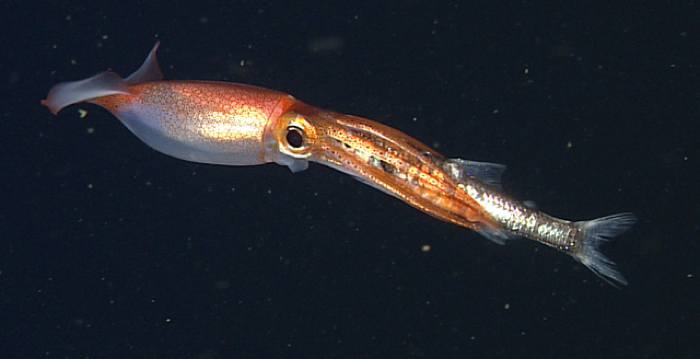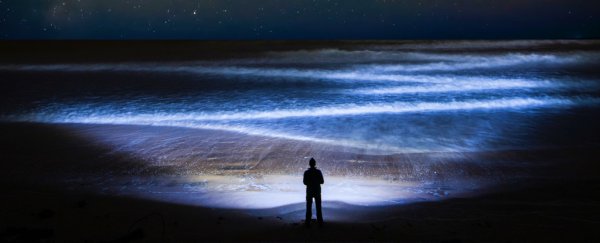At night, they rise. As the Sun disappears over the horizon, a vast movement takes place in the world's oceans, as countless sea creatures begin the long trek upwards towards the surface waters above.
They do not stay long. When the Sun rises, bringing light and the threat of watchful surface predators, they will retreat once more, down into the lower depths of the sea, sheltering in whatever protection the enveloping darkness can afford them.
This endless back-and-forth – called diel vertical migration (DVM) – is thought to be the largest mass migration on the planet in terms of the enormous amount of biomass involved, and it's something that happens every single day and night, even though humans, for the most part, hardly even notice.
Some do, however. Scientists at the Monterey Bay Aquarium Research Institute in California have been watching closely, analysing thousands of hours of footage of this phenomenon, and publishing their findings in a new study.
In short, the migration is no picnic. For vertical migrators who are preyed upon, there really is no such thing as a truly safe harbour, as predators hunt them basically every step of the way on their up-down journey, which usually spans hundreds of metres each way.
 A Gonatus onyx squid eating a lanternfish. (MBARI)
A Gonatus onyx squid eating a lanternfish. (MBARI)
"Just as there is a second set of predators that occupy the migrators' dark daytime depths, there is also a diverse suite of predators that comprise a gauntlet of threats during the migrations," the authors write in their paper.
Drawing upon a huge amount of observations recorded between 1997 and 2015 in Monterey Bay – and taken by human-occupied vehicles (HOVs), remotely operated vehicles (ROVs), and autonomous underwater vehicles (AUVs) – the researchers sought to examine vertical migration "from the standpoint of the migrators", to gauge the level and kind of threats they meet during daily movements.
"Nobody has ever looked at migration from that perspective," says midwater ecologist Bruce H. Robison.
"People have always made predictions of predation on vertical migrators based on data from net tows or acoustic surveys. But we spent so much time in the water videotaping the animals that we realised we could look at the risks of migration directly, based on what they actually encounter."
In addition to a particular focus in the study on encounters faced by two prey animals – krill (Euphausia pacifica and Thysanoessa spinifera) and lanternfish (also known as myctophids) – the researchers also developed a model, based on the encounter data, to calculate the "threat potentials" these animals face from predators during vertical migration.
"Threat potential is a measure of the latent risk of encountering a potential predator or obstacle during diel vertical migration," the researchers explain.
"It does not equate to mortality nor is it a proxy for predation rate or predatory impact."
Given the seemingly omnipresent predatory obstacles these vertical migrators face, the researchers acknowledge "the odds of successful migration seem very small" – and yet, somehow, high threat potentials don't always spell high death rates.
The reason why depends on the defensive and evasion capabilities of particular prey, but can include tactics such as mimicry, bioluminescence, schooling and swarming behaviour, among others, the team says.
While they may have to run the gauntlet their entire lives – every day, and every night – prey populations tend to find a way to persist in the face of hungry dangers, whether swimming to the light, or swiftly in the opposite direction.
The findings are reported in Frontiers in Marine Science.
